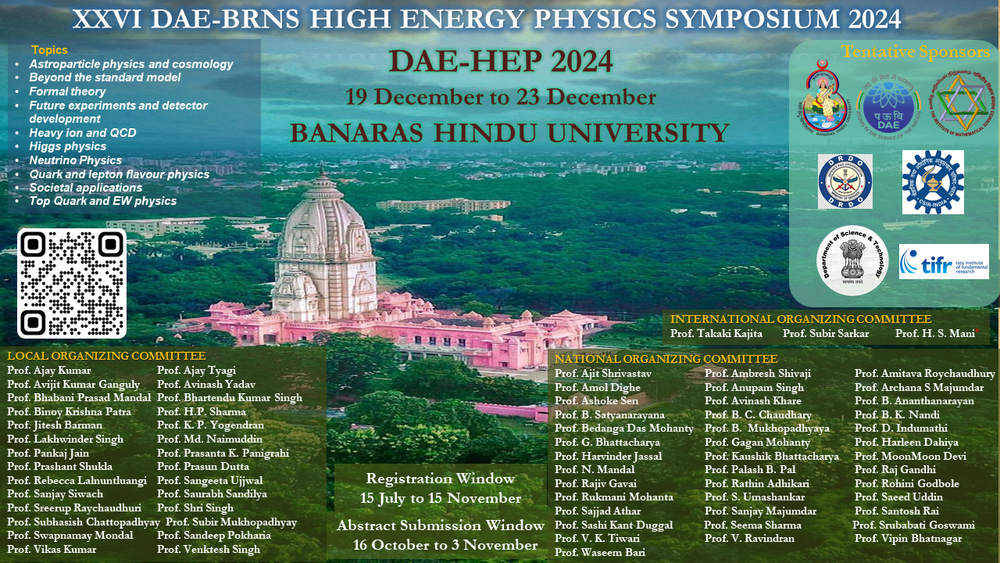Speaker
Description
The INO-ICAL collaboration has developed multiple prototype detectors utilizing Resistive Plate Chambers (RPCs) as sensitive detectors at TIFR, Mumbai, and IICHEP, Madurai. The Cosmic Muon Veto Detector (CMVD) aims to explore the feasibility of constructing a large-scale neutrino experiment at shallow depths. A primary objective of the CMVD is to achieve a veto efficiency exceeding $99.99\%$, while maintaining a false-positive rate below $10^{-5}$.
To accomplish this, a small-scale veto wall has been constructed using several extruded plastic scintillators (EPS) measuring approximately $450 \, \text{cm} \times 5 \, \text{cm} \times 1 \, \text{cm}$. The veto wall is positioned atop a $1 \, \text{m} \times 1 \, \text{m}$ RPC stack and comprises up to four staggered layers of scintillators. The staggering of each layer ensures that no dead space exists between adjacent units. Scintillation light is collected using two Kuraray Y-11 wavelength-shifting (WLS) fibers, with Silicon Photomultipliers (SiPMs) employed for signal readout.
The performance of each EPS and the SiPMs has already been validated through dedicated test setups. Monte Carlo simulations have been developed, incorporating all known detector parameters, including SiPM noise, observed spectra, and the time resolution associated with cosmic muons along the entire length of the EPS. The efficiency of the veto wall is estimated using reconstructed muon tracks in the RPC stack, ensuring sufficient measurement points and high-quality fits. This paper will present a detailed description of the veto algorithm and the expected efficiency of the veto system, highlighting its potential for future shallow-depth neutrino experiments.
| Field of contribution | Experiment |
|---|

